Java web后端4 会话 Cookie Session
Posted DQ_CODING
tags:
篇首语:本文由小常识网(cha138.com)小编为大家整理,主要介绍了Java web后端4 会话 Cookie Session相关的知识,希望对你有一定的参考价值。
会话
会话:指的是一个客户端(浏览器)与Web服务器之间连续发生的一系列请求和响应的过程。
客户端和服务器的请求和响应的过程(对话双方只要有一方发生变化,都属于不同的会话)
超时间隔【距离上一次请求的间隔】,超时后就属于不同的会话
HTTP是无状态的,不保存用户信息
Cookie客户端
Session服务器

Cookie
Cookie是一种会话技术,它用于将会话过程中的数据保存到用户的浏览器中【保存在客户端的磁盘或缓存(内存)中】,从而使浏览器和服务器可以更好地进行数据交互。
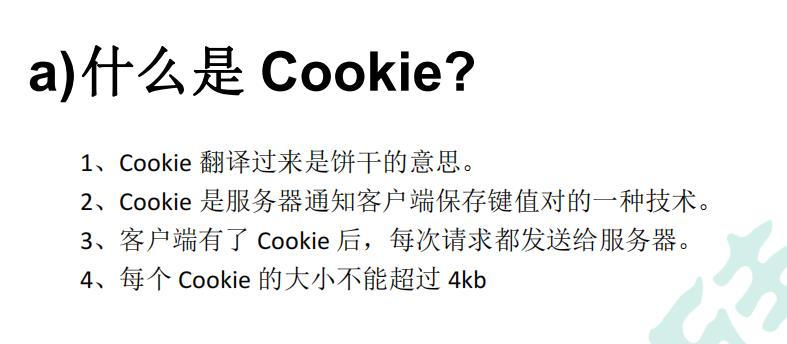

用户第一次访问时,没有Cookie

Cookie API
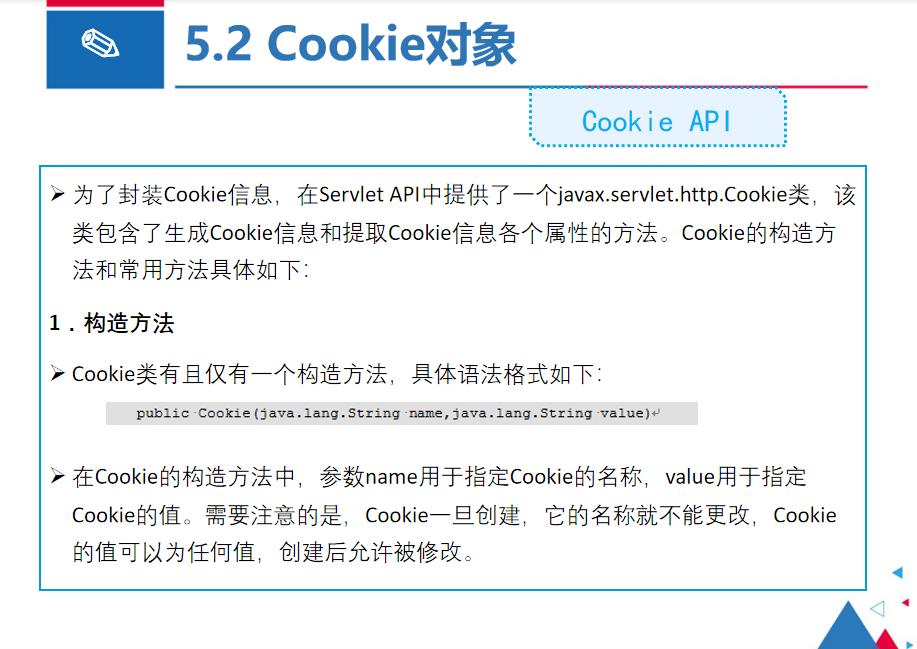
Cookie的相关方法

Cookie–setMaxAge()和getMaxAge()
负数:浏览器一关,缓存就会清空【将Cookie保存在浏览器的缓存中】
默认为-1
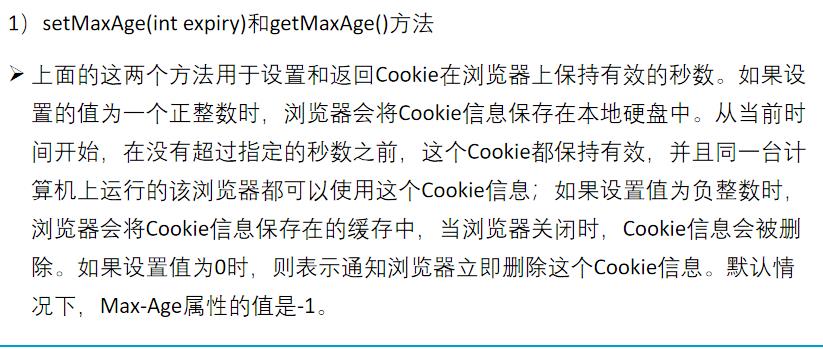
Cookie的案例
/**
* Illustration
*
* @author dengqing
* @time 2021/10/13
* @function cookie上次访问时间
*/
@WebServlet(name = "Cookie1", value = "/cookie1")
public class Cookie1 extends HttpServlet {
@Override
protected void doGet(HttpServletRequest request, HttpServletResponse response) throws ServletException, IOException {
response.setContentType("text/html; charset=UTF-8");
//字符输出流
PrintWriter out = response.getWriter();
Date date = new Date();
//格式化输出
SimpleDateFormat sdf = new SimpleDateFormat("yyyy年MM月dd日HH:mm:ss");
//获取当前时间
String NowTime = sdf.format(date);
//创建Cookie对象并保存当前时间到Cookie对象之中
Cookie cookie = new Cookie("LastTime", NowTime);
//将Cookie信息回写至客户端浏览器
response.addCookie(cookie);
//设置cookie保存在磁盘中,为90秒;90秒后失效
cookie.setMaxAge(90);
//把浏览器中所有Cookie返回
//Cookie[] cookies:Cookie对象数组
Cookie[] cookies = request.getCookies();
String LastAccessTime = null;
//如果cookies不为空,再循环,防止空指针异常
if (cookies != null) {
//增强型for循环
for (Cookie c : cookies) {
//匹配是否有"LastTime" Cookie
//"LastTime"字符串写在前面,防止空指针异常
if ("LastTime".equals(c.getName())) {
//获取Cookie的值,如果为空,则为浏览器第一次访问
LastAccessTime = c.getValue();
}
}
}
//Cookie的值,如果为空,则为浏览器第一次访问
if (LastAccessTime.isEmpty()) {
out.write("你是首次访问本站!");
} else {
//每次刷新,就会重新计算90秒:cookie.setMaxAge(90);
//90秒后失效,就又会显示:你是首次访问本站!
out.write("你上次访问本站的时间:" + LastAccessTime);
}
}
@Override
protected void doPost(HttpServletRequest request, HttpServletResponse response) throws ServletException, IOException {
}
}
Session会话
Cookie是键值对,不能存储大量数据【每次放在请求头中】,并且不安全,效率低
所以使用Session存储大量数据,Session是一种将会话数据保存到服务器端的技术
说会话,指Session
Session的创建,由Servlet容器在发起会话时自动创建
当浏览器访问Web服务器时,Servlet容器就会创建一个Session对象和ID属性【32位16进制,16的32次方,2^128次方,ID不会重复,类似IPv6,64位】,当客户端后续访问服务器时,只要将标识号传递给服务器,服务器就能判断出该请求是哪个客户端发送的,从而选择与之对应的Session对象为其服务。
由于客户端需要接收、记录和回送Session对象的ID,因此,通常情况下,Session是借助Cookie技术来传递ID属性的。

Session原理

Session是通过Cookie技术实现的,依赖于名为JSESSIONID的Cookie,它将信息保存在服务器端。Session中能够存储复杂的Java对象,因此使用更加方便。如果客户端不支持Cookie,或者禁用了Cookie,仍然可以通过使用URL重写来使用Session。

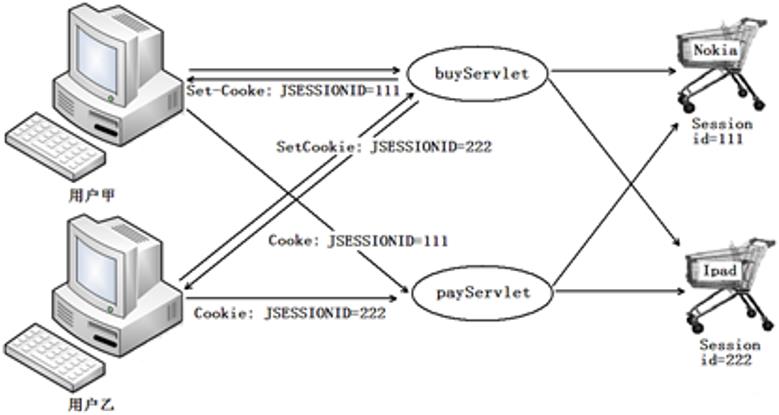
Session-获取Session对象
不同的请求对象获取的Session对象,不一定不同;因为可能是处于同一次会话
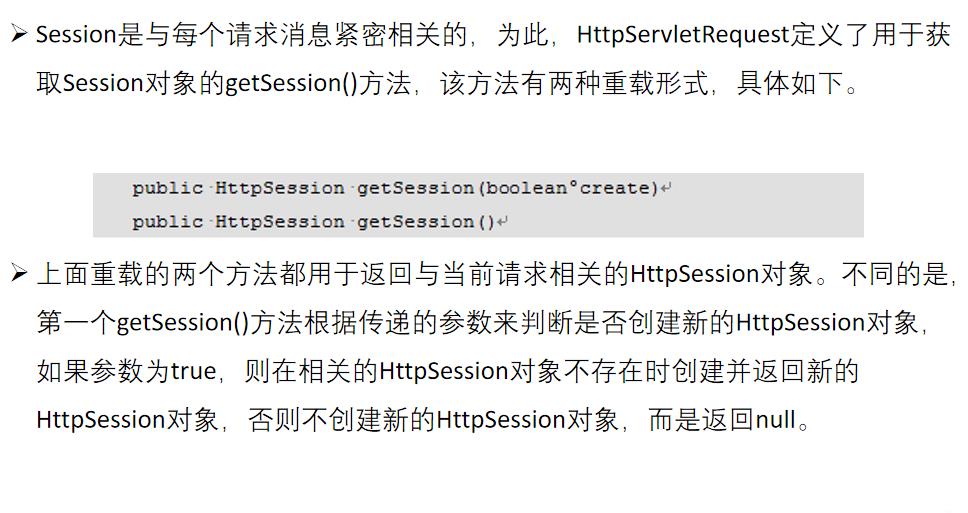

Session相关方法
大型项目一般使用时间戳,国内外一致【getLastAccessedTime()】
Sesssion超时,设置为分钟,在超时时间内如果没有任何请求则超时

invalidate():类似删除Session

Tomcat的Session超时设置

Session案例
浏览器不同窗口属于同一次会话
浏览器关闭,则结束会话了



loginServlet.html
<!DOCTYPE html>
<html lang="en">
<head>
<meta charset="UTF-8">
<title>Title</title>
</head>
<body>
<!--等效-->
<!--action="http://localhost:8082/WebServletProject_war_exploded/loginServlet"-->
<form action="loginServlet">
<!--div标签:把组件分割开-->
<!--placeholder 是HTML5 中新增的一个属性。
placeholder可以用来描述输入字段预期值的简短的提示信息。
提示信息会在用户输入值之前显示,一旦用户输入信息该提示就会自动消失。-->
<!--placeholder :提示用户输入信息-->
<div><input type="text" name="uname" placeholder="用户名"></div>
<input type="password" name="upwd" placeholder="密码"></br>
<div><input type="submit" value="登录"></div>
</form>
</body>
</html>
LoginServlet.java
/**
* Illustration
*
* @author dengqing
* @time 2021/10/13
* @function Session:实现登录成功后存入Session;获取Sesssion数据
*/
//http://localhost:8082/WebServletProject_war_exploded/loginServlet.html
@WebServlet(name = "LoginServlet", value = "/loginServlet")
public class LoginServlet extends HttpServlet {
@Override
protected void doGet(HttpServletRequest request, HttpServletResponse response) throws ServletException, IOException {
response.setContentType("text/html;charset=UTF-8");
PrintWriter out = response.getWriter();
System.out.println("进入loginServlet登录页面...");
//获取login.html页面用户输入的值
String name = request.getParameter("uname");
String pwd = request.getParameter("upwd");
if ("admin".equals(name) && "123".equals(pwd)) {
//获取对话Session
HttpSession session = request.getSession();
//将当前用户的名称存入Session
session.setAttribute("user",name);
//<script>alert('登录成功')</script>:javascript,弹出警告框
out.write("<script>alert('登录成功')</script>");
response.sendRedirect("mainServlet");
} else {
out.write("用户名或密码输入错误");
response.sendRedirect("loginServlet.html");
}
}
@Override
protected void doPost(HttpServletRequest request, HttpServletResponse response) throws ServletException, IOException {
}
}
MainServlet.java
@WebServlet(name = "MainServlet", value = "/mainServlet")
public class MainServlet extends HttpServlet {
@Override
protected void doGet(HttpServletRequest request, HttpServletResponse response) throws ServletException, IOException {
response.setContentType("text/html;charset=UTF-8");
PrintWriter out = response.getWriter();
//获取当前对话的Session对象
HttpSession session = request.getSession();
//获取Session的用户名称
Object user = session.getAttribute("user");
//不为空,之前已经登录过,直接访问
if (user!=null){
out.write("进入MainServelt主页面");
out.write("欢迎回来!"+(String)user);
}else {
out.write("你还没有登录,请先登录后再访问此页面!\\n");
out.write("<a href='loginServlet.html'>点击此处进行登录!</a>");
}
}
@Override
protected void doPost(HttpServletRequest request, HttpServletResponse response) throws ServletException, IOException {
}
}
以上是关于Java web后端4 会话 Cookie Session的主要内容,如果未能解决你的问题,请参考以下文章